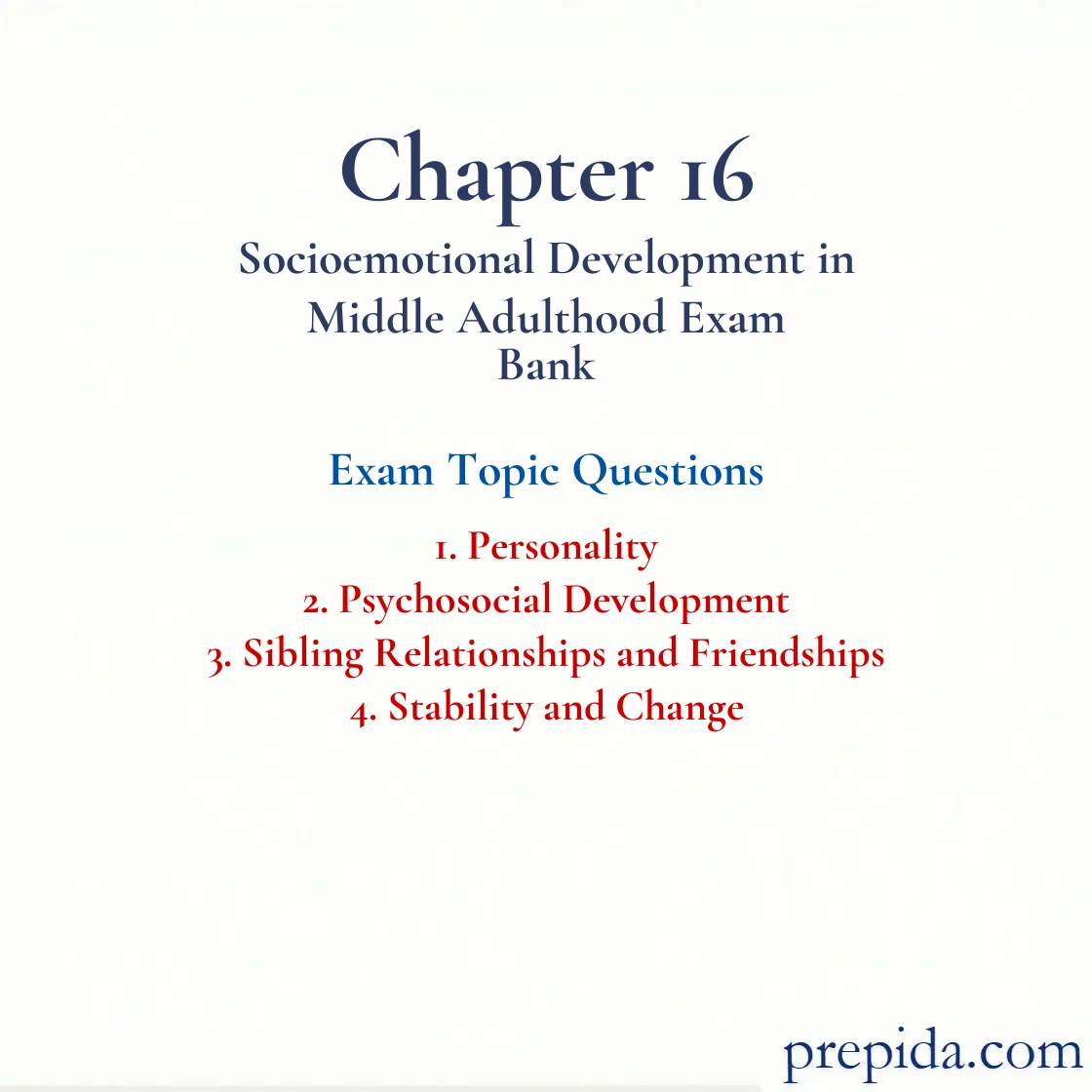
The ________ model of personality development states that with time and age people become more adept at interacting with their environment in ways that promote increased stability in personality.
- cognitive personality
- cumulative personality
- humanistic personality
- integrative personality
Big Five Factors of Personality: Emotional stability (neuroticism), extraversion, openness to experience, agreeableness, and conscientiousness.
In the Berkeley Longitudinal Studies, which of the following characteristics generally changed the most in the life span of an adult?
- intellectual orientation
- nurturance or hostility
- openness to experience
- self-confidence
Life Span: The maximum number of years an individual can live. The life span of human beings is about 120 to 125 years of age.
What is John Clausen's (one of the researchers in the Berkeley Longitudinal Studies) criticism about the adult stage theories?
- Too much attention has been given to the discontinuities in life.
- Most people actually have stable, continuous lives with little change.
- Personality is actually characterized by change, not stability.
- Life changes do not follow through in stages, but rather in a continuum.
Attention: The focusing of mental resources on select information.
In the Berkeley Longitudinal Studies, which of the following characteristics was generally stable in the life span of an adult?
- nurturance
- hostility
- self-control
- self-confidence
Self-Concept: Domain-specific evaluations of the self.
Karen, aged 21, is a senior in college, but her mother calls her five or six times a day to "check in" and to ask her what she is doing, what she had for lunch, and so on. This type of parenting is called ________ parenting.
- pathological
- helicopter
- boomerang
- indulgent
Which of the following is true of middle-aged and older adults who had poor sibling relationships in childhood?
- Men are more likely to develop depression by age 50.
- Women are more likely to develop depression by 40.
- Both men and women tend to re-bond with their siblings during middle age.
- Women tend to move away from sibling relationships.
Major Depression: A mood disorder in which the individual is deeply unhappy, demoralized, self-derogatory, and bored. The person does not feel well, loses stamina easily, has poor appetite, and is listless and unmotivated. Major depression is so widespread that it has been called the “common cold” of mental disorders.
Gerard and his sister were never close when growing up. Now that they are adults, it is most likely that their relationship is
- neutral.
- close.
- distant.
- improving.
Which of the following statements is true of sibling relationships?
- Siblings who were psychologically distant from each other in childhood tend to be close in adulthood.
- The majority of sibling relationships in adulthood are apathetic.
- Sibling relationships rarely persist over the entire life span for most adults.
- It is rare for sibling closeness to develop for the first time in adulthood.
Attachment: A close emotional bond between two people.
In the longitudinal studies by George Vaillant, one of the factors at age 50 that was linked with being in the "happy-well" category of 75- to 80-year-olds was
- being future-oriented.
- being wealthy.
- having a stable job.
- having children.